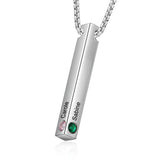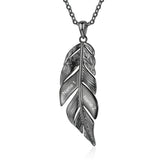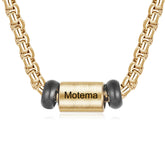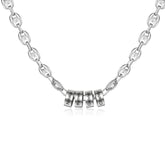Silver vs. White Gold
Many have been stumped on whether to pick silver or white gold as jewelry. Both are great in their own way and for different purposes, which is why it is important to understand the difference between them for an accurate choice. This article will help in making such a comparison between silver and white gold and help consider their composition, physical features, uses in jewelry, prices, and more.

What is Silver and White Gold?
Silver is a very valuable metal that has been in use by different cultures of the world since ages for its brilliance and ductility. It is used widely in many forms such as jewelry and tableware, and it goes into many other uses too. It is normally marked in 'sterling'; thus, by sterling silver, it means it is 92.5% pure silver mixed with other metals to impart strength.
White gold is a type of alloy that is prepared by mixing pure gold with some white metals such as palladium or silver and is generally plated with rhodium for strengthening and brilliance. Pureness is defined in karats, similar to yellow gold, but the most used types are 14K and 18K for jewelry products.
Aspect Comparison
| Aspect | Silver | White Gold |
|---|---|---|
| Purity | Sterling Silver (92.5% Silver) | Usual 14K or 18K (58.3% or 75% Gold) |
| Color | White with greyish tint | White with yellowish or grayish tint. Most are plated with rhodium to have a whiter look |
| Common Uses | Jewelry, Tableware, Coins, Industrial uses | Jewelry |
In the succeeding sections, we will delve further into the aspects of these metals, enabling you to decide which among them might be a better fit for your needs.
What makes silver and white gold different in composition?
At first glance, silver and white gold could be mistaken as the same color because of their metallic sheen which is white in color. However, their composition and properties are fundamentally different in major ways. This article discusses unique elements that make up silver and white gold.
Silver
Silver is a brilliant, extremely ductile pure elemental metal of considerable applicability. The silver of jewelry and tableware is usually 'sterling silver', an alloy of 92.5% Ag and 7.5% other metals, usually Cu. The copper addition strengthens the silver without sacrificing its most valuable properties. Other variants include: fine silver, 99.9% purity; and Argentium silver, either 93.5 or 96 percent silver, with the remainder being germanium, which allows it to remain much more tarnish resistant.
White Gold
White gold is not a native metal but an alloy that is produced when pure gold is mixed with another white metal such as palladium, nickel, silver, or zinc. The color results from the alloy mix, and generally, it lacks the brightness required to make the gold appear silver-like or platinum-like; hence, the majority of the white gold jewelry is plated using rhodium, which provides whitening effects along with protection against corrosion.
14K White Gold-contains 58.3% pure gold, the rest are other metals. 18K White Gold: This is the type containing a higher amount of gold, meaning it contains 75% of gold and the rest 25% other metals.
While both silver and white gold comprise other metals, too, to have strength, the primary reason for choice between the two is usually a matter of taste, budget, and the objective of the piece.
Physical Properties: Silver vs White Gold
Though they appear the same, silver and white gold differ in some physical properties that affect their appearance, durability, and usability in jewelry. The table below compares their main characteristics.
| Property | Silver | White Gold |
|---|---|---|
| Color | Silver is of bright white color, which tends to tarnish over time due to oxidation, and becomes blackish. | White Gold: pale yellow in color and often plated with rhodium to give it a whiter appearance. |
| Hardness | Silver is softer and not as durable; it scratches easily and wears away with time. | White gold is harder and more scratch-resistant, particularly in higher karats. |
| Maintenance | Silver must be cleaned regularly to remain shiny and prevent tarnish. | Re-plating of white gold is visibly necessary in due course to maintain its white sheen. |
| Price | Silver is a more affordable alternative since it can be found in very large quantities. | White gold contains gold and has to pass through the procedure of rhodium plating, so costs more. |
| Allergic Potential | Silver is less likely to cause allergic reactions as it is hypoallergenic, so it is suitable for sensitive skin. | White gold can sometimes cause allergic reactions, especially if it contains nickel. |
Understanding these properties will help you make an informed decision based on your lifestyle, budget, and aesthetic preferences.
Durability and Longevity: Silver vs. White Gold
The second factor is that silver and white gold have a difference in the strength and durability, or how long each material lasts. These materials vary over time, which has an effect on how your jewelry looks and how long it will last. Compare their durability and longevity in the table below:
| Aspect | Silver | White Gold |
|---|---|---|
| Scratch Resistance | Slightly softer, silver is easily scratched and dented. | White gold is harder and less likely to be scratched. |
| Tarnish Resistance | Silver tarnishes easily and needs to be cleaned and polished regularly. | White gold does not tarnish; it may yellow over time and need to be re-plated. |
| Longevity | While durable, silver might show signs of wear more quickly. | With proper care, white gold can maintain its luster and structural integrity for a longer time. |
Both white gold and silver have their own strengths and weaknesses regarding durability and service life. The choice is entirely up to your personal preference, the type of jewelry, and how much you intend to use it.
Difference in Aesthetic View of White Gold vs. Silver Jewelry
While both silver and white gold have a similar white-grayish color, there are subtle differences in their aesthetics that might influence your choice:
Silver
Pure silver is simply referred to as fine silver and shines very bright and clean. The type of silver more used in jewelry, however, is sterling silver. Sterling silver consists of 92.5% silver and 7.5% other metals, giving a cool tone.
White Gold
Its an alloy for gold and one of the white-coloured metals to include palladium or nickel it has a white-gold core, plated with extra durability and the brightness of this alloy is Rhodium. Therefore, the white glow has a slightly deeper warm tone towards silver. More reflective with a bright reflective finish.

At times, white gold or silver is simply a matter of person preference, depending on whichever jewelry works best with the given style that defines someone's aesthetic.
Price Comparison: Silver vs White Gold
Price is another important consideration when deciding between silver and white gold. Let's break it down:
Silver
Silver is relatively much cheaper than white gold. It makes it popular in fashion jewelry and pieces that you don't wear every day.
White Gold
White gold is plus expensive than silver. It is usually used for engagement rings and other luxury jewelry pieces, and the difference in price goes back to the content of the gold as well as in the process of creating white gold, which involves rhodium plating.
Ultimately, whether silver or white gold is better for you will depend on your budget, the importance and usage of the jewelry piece, and your personal style preferences.
Maintenance and Maintenance: Silver and White Gold
Proper maintenance and care can extend the lifespan and beauty of the jewelry, such as silver or white gold.
Silver
Silver tarnishes, so it needs regular cleaning to keep its luster. It is best to store silver jewelry in a cool, dry place, preferably in a cloth pouch or in a separate compartment in your jewelry box to avoid scratches.
White Gold
The rhodium plating in white gold wears off with time. Additional plating of white gold is therefore necessary after a few years. In addition, like silver, it is recommended not to stack white gold ornaments on top of each other, as they may scratch one another.
Overall, with both metals, it is best if you take off your jewelry while doing manual tasks, in which the jewelry might get damaged physically. Also, it is best to avoid a lot of harsh chemicals, either cleaning ones or beauty products containing them since such chemicals can damage metals and stones.
Allergenic potential of silver and white gold.
Those who have sensitive skin would be curious about the allergic reactions of silver and white gold:
Silver
Sterling silver is typically knee-jerk hypoallergenic. However, if you're allergic to copper, you might be reactive to sterling silver as it is an alloy that contains 7.5% of copper.
White Gold
White gold often contains nickel. If you are allergic to nickel, mild or severe, look for white gold made with palladium or choose platinum or palladium jewelry instead.
Consult your jeweler, in case of any known allergies to specific metals, so you understand the composition of your chosen piece.
The Market Value of Silver and White Gold
Both silver and white gold have monetary values in the market; however, both have differences in between.
Silver
Silver, while being a precious metal, is much more plentiful than gold, which brings the price a long way from gold's value. Silver increases and decreases depending on the market demand versus availability to industry.
White Gold
The white gold is costly compared to silver because it is made of gold, which is less available in the market and has a greater market value. The price may differ according to the karat weight, whereby higher karats mean more content of gold and, consequently, a more expensive price tag.
Nevertheless, the market value will also be affected by factors such as brand, craftsmanship, and the presence of precious gemstones in your jewelry.
Symbolic Differences: Silver vs White Gold
Many cultures, and during various times in history, silver and white gold have represented multiple symbolic meanings.

- Silver: Traditionally, it has been associated with femininity, the moon, and serenity. It is very much symbolic of wealth and prosperity.
- White Gold: White gold is typically characterized as elegant, sophisticated, and pure. As it is made from gold, the same connotations of richness, divinity, or royalty are associated with it.
White gold started to be produced in the 1920s as an alternative to platinum, which was then a staple to be used in all forms of jewelry and jewelry timepieces during the Art Deco period. It is now highly prized for its properties and aesthetic appeal.
Environmental Impact: Mining Silver versus White Gold
The mining processes for both silver and white gold have huge environmental impacts:
- Silver: If conducted improperly, then silver mining also contaminates the water supply. Chemical use is necessary for several processes that might seem harmful to environmental systems. Habitation and, of course, washing away soil have been lost over the course of habitat destruction as another common practice extracted silver from open pits.
- White Gold: The mining of gold is harmful to the environment. It uses cyanide most of the time and produces tons of waste rock. In addition, acid mine drainage, which is a deadly poison that can contaminate water bodies, is indicated in some mines.
It is important to buy jewelry from companies that encourage responsible mining practices and recycling as well.
White Gold and Silver: A Historical Perspective
Silver and white gold have a lot of history, determining their usage as well as value through different periods.
- Silver: The use of silver goes as far back in human history as recorded. Egyptian and Greek civilizations sought after this metal not just for its appearance but for its antibacterial property. The coinage, jewelry, and the numerous other items used it are some reasons it has remained so valuable.
- White Gold: A product of modernity, it was invented in the late 19th century. They discovered white gold as a replacement for platinum that was at that time extremely expensive. The product made its way so fast into making jewelry that people loved due to its durability and beauty, thus its status since it is gold.
How to Choose Between Silver and White Gold: Factors to Consider
Both white gold and silver vary in terms of budget, style, and preferences towards the maintenance of such jewelry. In this regard, here is a comparison to make your decision better:
| Aspect | Silver | White Gold |
|---|---|---|
| Budget | Generally less expensive. A good option for those on a tight budget. | More expensive due to its gold content and the complex process of creating white gold. |
| Style | Offers a vintage and casual look. Ideal for everyday wear. | Provides a sleek and modern appearance. Often chosen for engagement rings and other formal jewelry. |
| Maintenance | It needs to be polished frequently because it loses its luster when it tarnishes with time. | It requires rhodium plating occasionally to maintain its white brilliance. It does not tarnish, unlike silver. |
| Longevity | Softer and more prone to scratching. However, with proper care, it can last a long time. | Durable and resistant to scratches. Excellent for jewelry that will be worn daily. |
| Allergenic Potential | Silver jewelry is generally hypoallergenic, except when combined with nickel in some alloys. | White gold can cause allergies because of the presence of nickel, although newer alloys use other metals to counteract this problem. |
Silver and white gold have their advantages. It is up to you to decide which one you prefer for your needs. If you’re looking for something more personalized, consider exploring custom bracelets to suit your preferences and budget.
Case Studies: Silver vs White Gold in Famous Jewelry Pieces
Let's look at this in more detail using familiar types of jewelry and the difference between silver and white gold, along with their special merits.

- Engagement Rings: White gold is more commonly used in engagement rings because it's a very durable material and very rich-looking. It doesn't wear out as quickly, which makes it a very good choice for an engagement ring. Silver is pretty and scratches easily; thus, it would not last through daily wear.
- Earrings: Both silver and white gold can be an excellent choice in earrings. Silver is excellent to make casual, daily earrings as they are quite economical. White gold seems to be the only choice that evokes elegance and style, hence considered for formal earring studs with precious stones adorning them.
- Necklaces and Pendants: White gold is generally used in very luxurious necklaces, especially in pendants which carry diamonds or other gemstones. Silver can be the perfect choice for more trendy and fashionable designs, as well as more casual styles due to its cool and versatile shine, and cost effectiveness.
- Bracelets: Silver is often used in charm bracelets and informal bangle designs, while white gold is more commonly seen in formal and fine jewelry bracelets. The choice between silver and white gold for bracelets depends on the occasion and the style of the wearer. Whichever the case may be, silver or white gold is usually a matter of personal preference, budget, and the intended use of the piece.
Silver or White Gold, What's Right for You?
In fact, a personal preference over which to have either silver or white gold can also be drawn in from factors like budgetary and specific jewelry piece requirements, because each material is uniquely beneficial in its different forms of beauty. The cool, versatile shine of silver, much more affordable than gold, makes it an excellent choice for either truly trend-setting casuals or for when one is on a tighter budget. White gold is valued for its strength, richness, and is apt for high-end and formal jewelry, especially in diamond or other precious stone-studded pieces.
Think about the type of wear your jewel will undergo, the message you want it to give, how much it will cost, and perhaps even your personal taste. Keep in mind that the worth of a piece of jewelry goes beyond the material but is rather considered in terms of both significance and the enjoyment a person receives when wearing it.
So, whichever jewelry you settle on, whether silver or white gold, your piece will become an heirloom over time.
Frequently Asked Questions
Which is more expensive, silver or white gold?
White gold is more expensive compared to silver because it is a compound. It is alloyed with other precious metals, and the percentage of gold is higher than that of silver.
Is 10k white gold better than sterling silver?
10k white gold is stronger than sterling silver simply because it contains more gold. However, whether it's "better" depends on personal preference and what the jewelry is used for.
Is sterling silver the same thing as white gold?
No, sterling silver and white gold are not the same. Sterling silver is an alloy of 92.5% of silver and 7.5% other metals, commonly copper. White gold, on the other hand, is an alloy of gold and at least one white metal, most often palladium or nickel, that may be plated with rhodium.
Is pure silver more valuable than pure gold?
No, pure gold is relatively much more expensive than pure silver for the reason of its scarcity as well as greater demand of that metal in almost all industries.
Why would someone choose white gold over silver?
Durability, a different color, or simply liking a heavier-value metal are all reasons to prefer white gold over silver. It also is less likely to tarnish compared to silver.
Can you bathe in white gold?
In general, white gold jewelry is removed during showers because soap and chemicals can damage the jewelry.
How will I distinguish between white gold and silver?
Hallmarks or stamps can be another method for the difference between white gold and silver. Compare this with the color. Silver is popularly known for its cool tone. In contrast, white gold has a slight yellow color because it still carries the original color of the metal.










